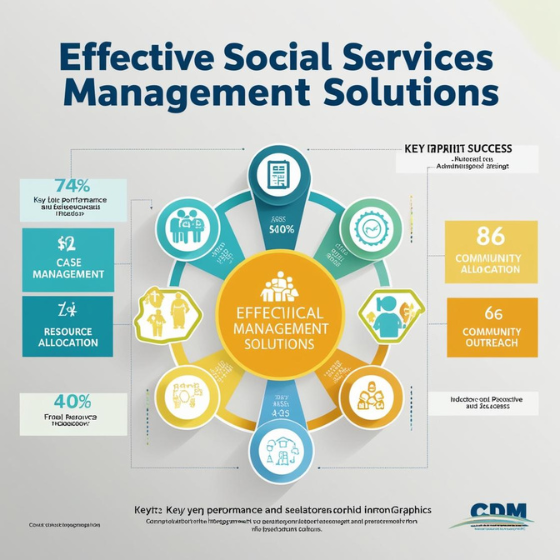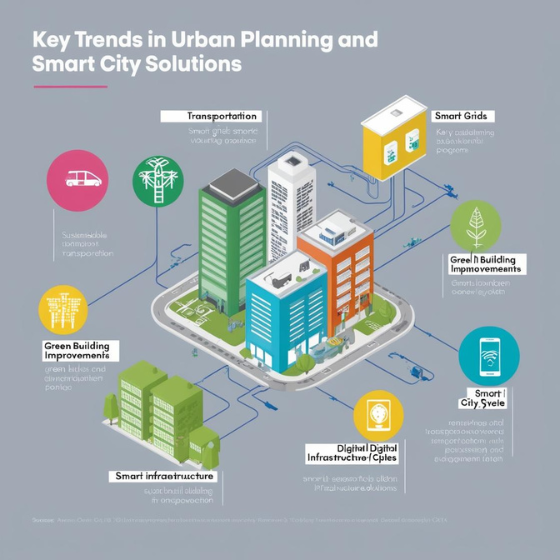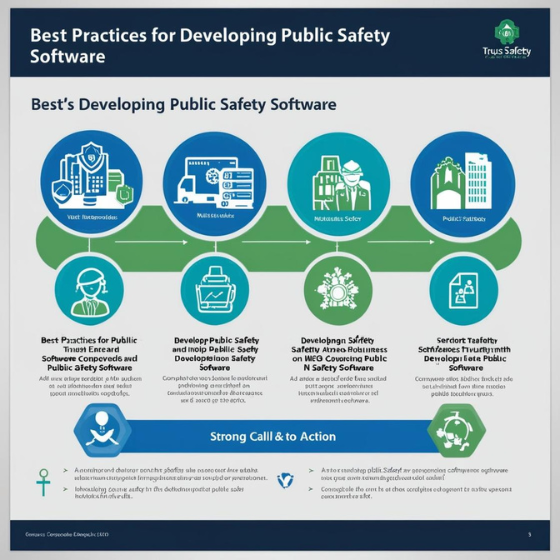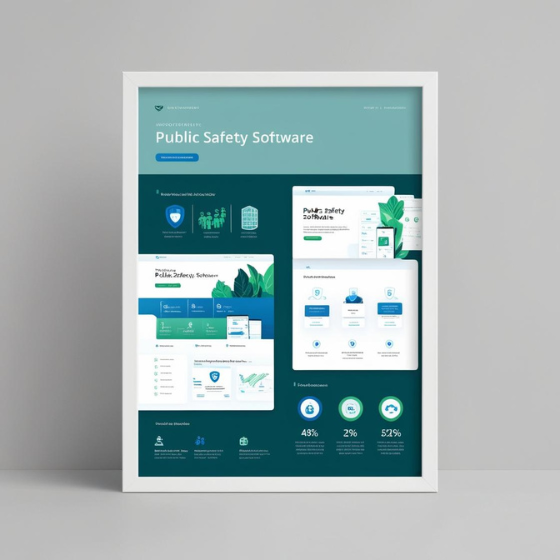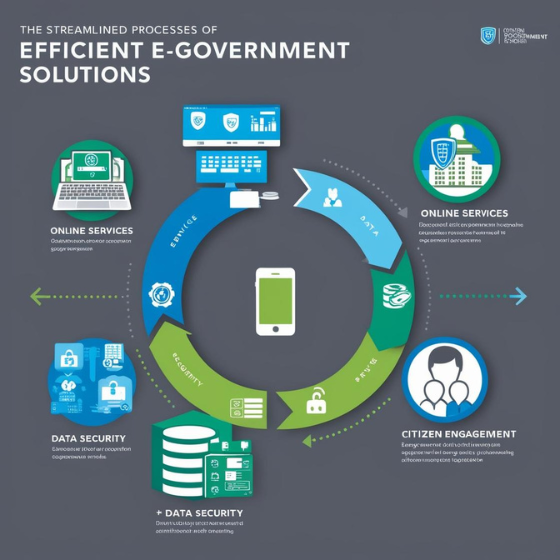How to Develop Effective Social Services Management Solutions
Social services play a crucial role in helping vulnerable communities, offering support in areas such as healthcare, housing, and mental health. As demand for services grows, it’s essential to have systems that improve efficiency, coordination, and resource allocation. Effective social services management solutions help deliver services more effectively, ensuring that people receive the support they need in a timely manner.
In this blog, we’ll explore the steps you can take to develop effective social services management solutions, ultimately improving service delivery and community well-being.
1. Understand Your Community’s Needs
Before you develop any solution, it’s essential to understand the unique needs of your community. Every community faces different challenges, such as homelessness, food insecurity, or mental health concerns. To design effective services, you need to know these specific needs.
Key Steps:
- Conduct Community Assessments: Gather data through surveys, focus groups, or public meetings to identify pressing issues.
- Identify Service Gaps: Analyze existing services to see where they are lacking or underserved. Focus on areas with high demand but limited support.
- Engage Stakeholders: Involve local organizations, community leaders, and service users to design solutions that best meet their needs.
Understanding your community ensures that your solutions will be effective and relevant.
2. Use Technology for Better Efficiency
Incorporating technology can significantly improve the management of social services. From simplifying workflows to improving communication, digital tools help service providers work more efficiently.
Essential Technology Tools:
- Case Management Software: These systems allow service providers to track and manage client needs, monitor progress, and streamline workflows.
- Cloud-Based Platforms: Cloud technology allows for real-time sharing of data across departments, improving collaboration and reducing delays.
- Mobile Solutions: Offering mobile apps helps clients access services more easily, book appointments, and stay informed about their cases.
By using technology, you can cut down on administrative tasks and ensure smoother, faster service delivery.
3. Make Data-Driven Decisions
Data is a powerful tool when it comes to managing social services. Analyzing data helps you make better decisions, optimize resources, and understand client needs more clearly.
How to Use Data Effectively:
- Collect Client Data: Gather information on service usage, client satisfaction, and outcomes to guide decisions.
- Use Predictive Analytics: With data, you can predict trends and plan for future service needs. For example, you might predict a rise in demand for housing services based on local economic factors.
- Track Client Outcomes: Monitoring long-term outcomes allows you to assess the effectiveness of programs and make necessary adjustments.
Data helps you make informed decisions that lead to better results and a more efficient use of resources.
4. Encourage Collaboration Between Agencies
Social services often require the collaboration of multiple organizations—such as healthcare providers, legal experts, and social workers. Effective collaboration ensures that clients receive comprehensive care and that no service is overlooked.
Tips for Successful Collaboration:
- Integrated Systems: Use integrated case management systems that allow different agencies to share client data, improving coordination and efficiency.
- Build Partnerships: Develop relationships with other service providers, local nonprofits, and government agencies to expand the range of services available to clients.
- Create Cross-Disciplinary Teams: Bring together professionals from different sectors to work on complex cases, ensuring holistic support for clients.
Collaboration ensures that clients receive the full spectrum of care and services, improving outcomes.
5. Prioritize Client-Centered Services
A client-centered approach places the needs of the client at the forefront of service delivery. Personalizing services helps ensure that each individual receives the care and support they need.
Key Strategies:
- Personalized Care Plans: Work with clients to create individualized care plans that focus on their specific goals and needs.
- Encourage Client Participation: Engage clients in the decision-making process to ensure that the services they receive are aligned with their preferences.
- Flexible Services: Be ready to adjust services as clients’ needs change over time. Providing flexibility allows you to offer continued support as circumstances evolve.
A client-centered approach leads to better engagement, higher satisfaction, and improved outcomes.
6. Plan for Sustainability and Long-Term Impact
Social services need to be sustainable to remain effective in the long run. Planning for sustainability ensures that services will continue to benefit the community even as needs evolve.
Key Strategies for Sustainability:
- Diversify Funding: Seek a mix of funding sources, including government grants, private donations, and community partnerships, to ensure financial stability.
- Optimize Resources: Use technology and data to allocate resources more efficiently, ensuring that funds are spent on programs with the greatest impact.
- Plan for Growth: Design scalable services that can expand as demand increases without sacrificing quality.
A focus on sustainability ensures that services continue to meet community needs over time, even during economic or funding challenges.
7. Evaluate and Improve Regularly
The work doesn’t end once services are implemented. Continuous evaluation helps identify areas for improvement and ensures that services remain effective in meeting client needs.
How to Evaluate and Improve:
- Collect Feedback: Regularly ask clients for feedback through surveys, interviews, or follow-up calls to understand their experiences.
- Track Performance: Set clear performance metrics, such as client satisfaction, service usage, and successful outcomes, to gauge effectiveness.
- Implement Adjustments: Use the feedback and data collected to make ongoing improvements to services, keeping them relevant and effective.
Continuous evaluation ensures that social services adapt to changing needs and improve over time.
Conclusion
Developing effective social services management solutions requires understanding community needs, adopting the right technology, and maintaining a client-centered approach. Collaboration between agencies, data-driven decisions, and sustainable funding are also crucial for long-term success. By focusing on these key areas, social service providers can enhance their impact, ensuring that clients receive the support they need to thrive.
Are you ready to improve your social services management? Contact Sodio today to discover how our innovative solutions can help you streamline operations and deliver better outcomes for your community.
